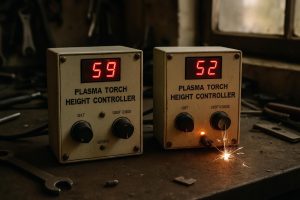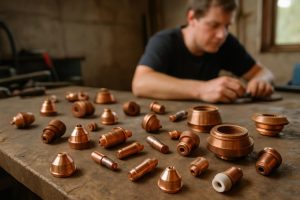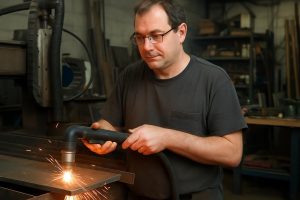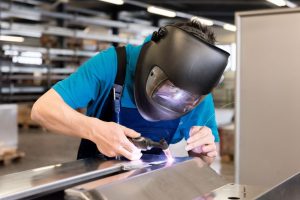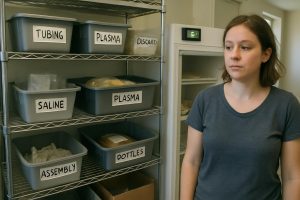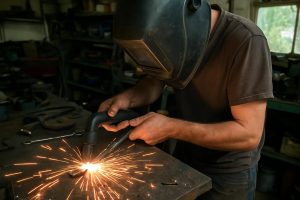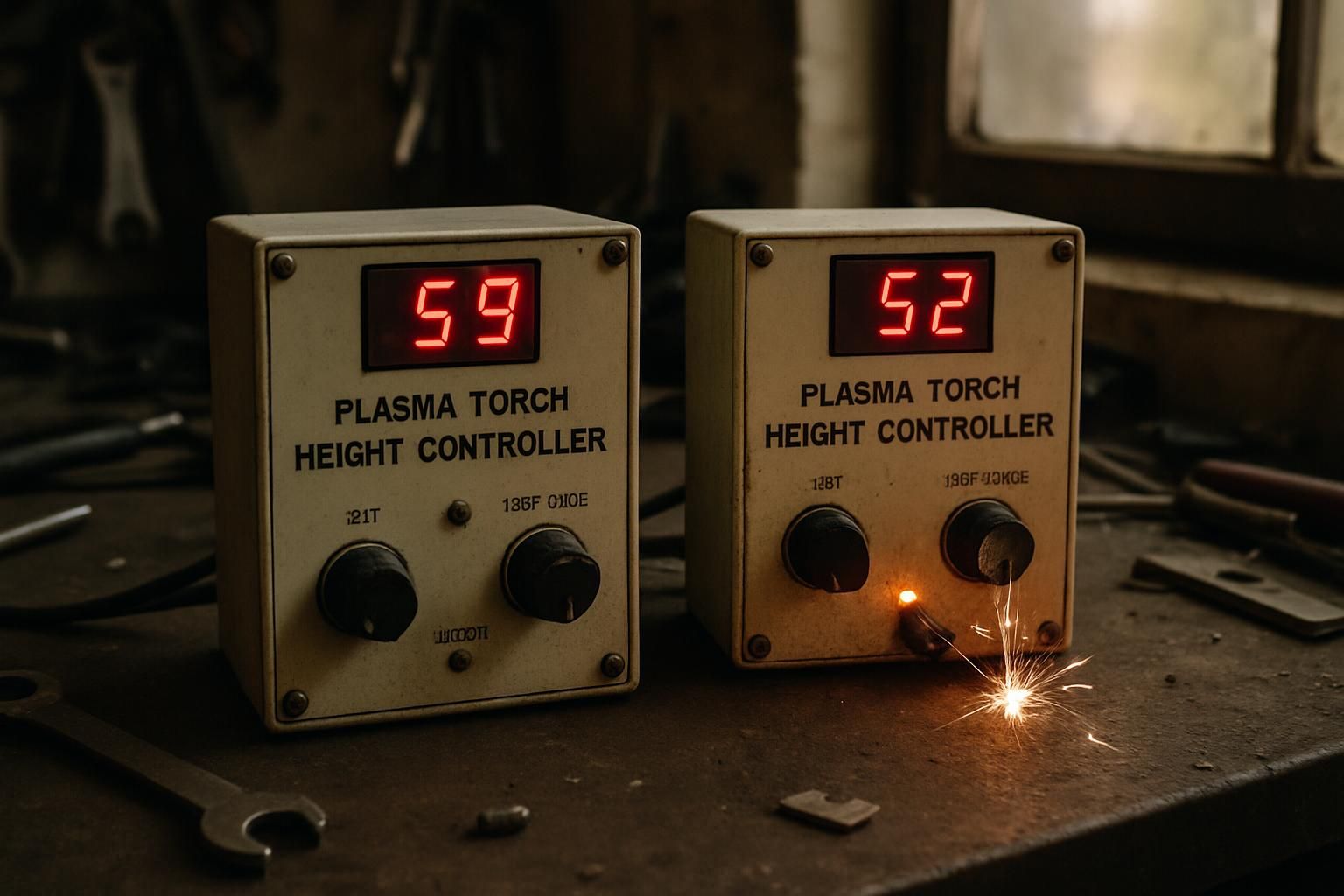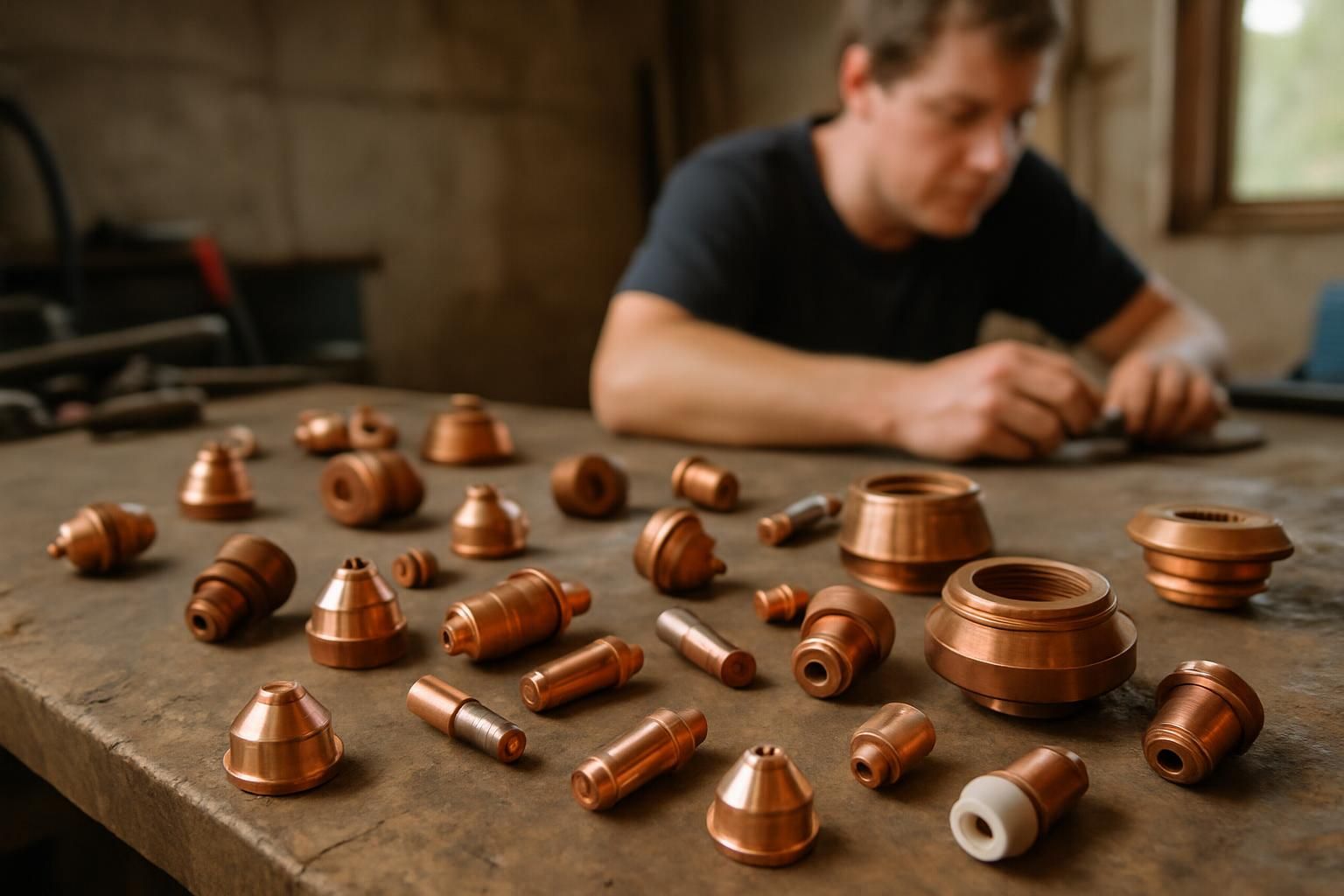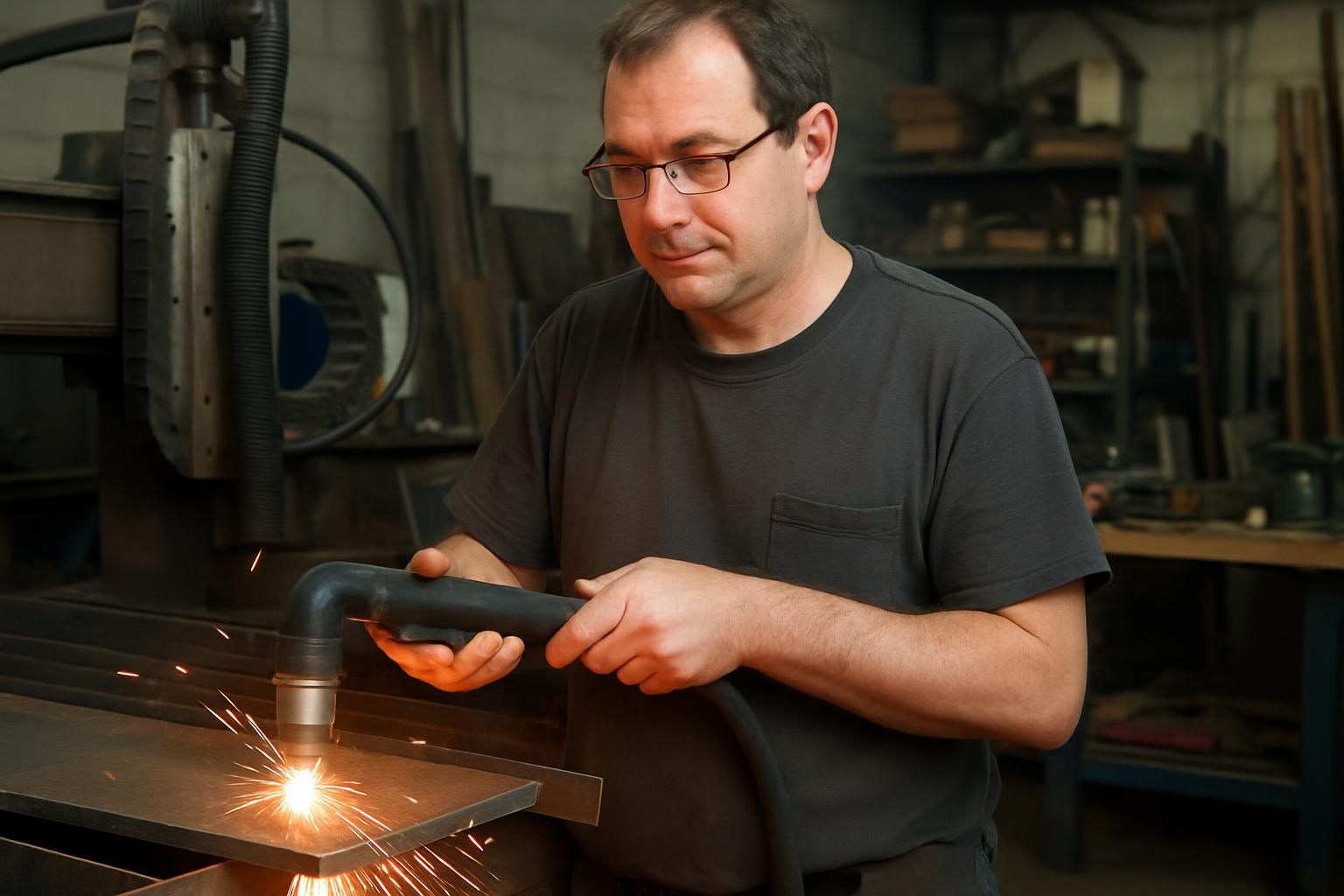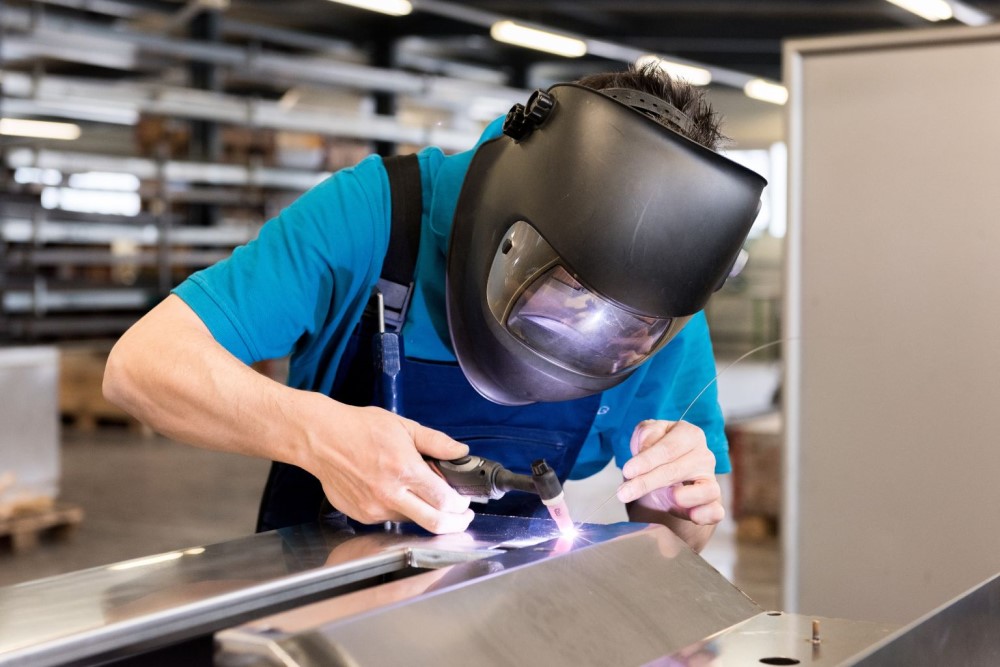Plasma cutters are amazing tools that can slice through metal like a hot knife through butter. We love using them in our shop for all sorts of projects. But have you ever wondered what makes these machines tick? Let’s take a peek inside and look at one of the most important parts – the electrode.
Plasma cutter electrodes are typically made of copper with a hafnium tip. This combo packs a powerful punch. The copper conducts electricity really well, while the hafnium can handle super high temperatures. When the electrode fires up, it gets blazing hot – we’re talking over 3000°F! That’s what creates the plasma arc that does all the cutting.
We’ve found that good quality electrodes make a big difference in how well our plasma cutter performs. Some brands use special copper alloys and manufacturing techniques to help the electrode last longer. This means we can cut more before needing to swap out parts. It’s pretty cool how much engineering goes into these little pieces of metal!
Forståelse af plasma -skæreteknologi

Plasma cutting is a powerful method for slicing through metal using a high-temperature ionized gas. Let’s explore how this technology works and the key parts involved.
Principles of Plasma Cutting
Plasma cutting uses a super-hot jet of ionized gas to melt and blow away metal. We start by sending gas through a small opening in the torch. An electric arc then heats this gas to extremely high temperatures, turning it into plasma.
This plasma jet can reach up to 30,000°C! At these temps, it easily melts metal and blows the molten material away. The result? A clean, precise cut through conductive metals like steel and aluminum.
One cool thing about plasmaskæring is how fast and accurate it can be. With computer controls, we can make complex shapes quickly and easily.
Komponenter i en plasmaskærer
EN Plasmaskærer has several important parts that work together:
- Strømforsyning: This provides the electricity needed to create the plasma arc.
- Fakkel: The business end of the cutter. It holds the electrode and nozzle.
- Elektrode: Usually made of hafnium or tungsten, it conducts electricity to create the arc.
- Dyse: A copper tip with a small hole that focuses the plasma jet.
- Swirl Ring: This part spins the gas to create a tighter plasma stream.
The electrode is key – it needs to withstand extreme heat. That’s why we often use hafnium. It has a high melting point and conducts electricity well.
We can adjust gas flow and electric current to control the cut. This lets us work with different metals and thicknesses. Pretty neat, right?
Materials Used in Plasma Cutter Electrodes

Plasma cutter electrodes are made from specialized materials designed to withstand extreme heat and generate a stable arc. Let’s explore the key components and options for these crucial parts.
The Role of Hafnium
Hafnium is the star player in most plasma cutter electrodes. We love it because:
• It has an incredibly high melting point of 4,041°F (2,227°C) • It conducts electricity well • It’s very resistant to wear
Hafnium is usually inserted into a copper base. As we use the electrode, the hafnium slowly wears away. When the pit in the hafnium gets too deep (about 1-1.6 mm), it’s time for a new electrode.
We’ve found that hafnium electrodes last longer when:
- We use the right amperage
- We don’t start and stop too much
- We keep the torch cool
Alternate Electrode Materials
While hafnium is great, it’s not the only option. Some other materials we use include:
• Tungsten: It’s super tough and has an even higher melting point than hafnium. • Copper: It’s cheaper but wears out faster. • Thoriated tungsten: It’s good for thin materials but can be slightly radioactive.
The best choice depends on what we’re cutting and how often we use our plasma cutter. For most of us, hafnium is the go-to choice. It balances performance and cost really well.
Consumables and Their Impact on Cutting Performance

Plasma cutter consumables play a crucial role in achieving precise and efficient cuts. We’ve found that using quality parts og proper maintenance can greatly improve cutting performance and extend the life of your equipment.
Identifying Quality Consumables
When choosing consumables, we look for parts made of durable materials like copper and hafnium. High-quality nozzles have precisely machined orifices for a focused plasma arc. We’ve noticed that cheaper nozzles often lead to rougher cuts and shorter lifespans.
Electrodes with hafnium inserts tend to last longer and provide more consistent performance. It’s worth investing in name-brand consumables from reputable manufacturers. They may cost more upfront, but often result in better cuts and less frequent replacements.
We always check that consumables are compatible with our specific plasma cutter model. Using the wrong parts can damage equipment or produce poor results.
Maintenance for Optimal Performance
Regular cleaning and inspection of consumables is key to maintaining cutting performance. We make it a habit to check nozzles and electrodes for wear before each use.
Replacing worn parts promptly helps prevent issues like:
- Reduced cutting speed
- Rough or angled cuts
- Excessive dross buildup
We’ve found that proper storage of consumables in a clean, dry place helps extend their lifespan. It’s also important to follow the manufacturer’s recommendations for air pressure and amperage settings.
Keeping track of consumable usage helps us plan replacements and maintain consistent cut quality. We log hours of use for each set of consumables to optimize our maintenance schedule.
Factors Influencing Electrode Life and Cut Quality

Electrode life and cut quality in plasma cutting are closely linked. Several key factors affect both, including how we set up and use our equipment. Let’s explore the main influences.
Optimizing Cutting Parameters
We’ve found that proper skærehastighed is crucial. If we cut too fast, we risk incomplete cuts. Too slow, and we might cause excessive dross. We aim for the sweet spot that gives us clean cuts without overworking our electrode.
Amperage settings matter too. Higher amperage cuts thicker materials but wears electrodes faster. We balance this by using just enough power for the job at hand.
Gas flow and pressure are other vital factors. The right mix and pressure of gases protect our electrode and improve cut quality. We make sure to follow manufacturer guidelines here.
Lastly, we pay attention to cut height. Keeping the torch at the right distance from the workpiece helps us get better cuts and extends electrode life.
Recognizing Signs of Wear
We keep an eye out for several telltale signs of electrode wear. Uneven or rough cuts are a big red flag. When we start seeing these, it’s often time for a change.
Increased arc instability is another sign. If our arc flickers or wanders more than usual, our electrode might be on its last legs.
We also watch for changes in piercing performance. If it takes longer to pierce through materials, that’s a hint our electrode is wearing out.
Visually inspecting the electrode can tell us a lot too. We look for pitting, erosion, or changes in the tip shape. These are clear signs it’s time for a replacement.
By staying alert to these signs, we can change our electrodes at the right time. This helps us maintain good cut quality and avoid wasting materials.
The Anatomy of a Plasma Cutting System

Plasma cutting systems have several key parts that work together to create precise cuts. Let’s explore the main components and how they function.
Cutting Torch Anatomy
De Skære fakkel is where the action happens. It has a few important parts:
- Electrode: This is usually made of hafnium or tungsten. It conducts electricity to create the plasmabue.
- Nozzle: It focuses and directs the plasma arc. The size of the nozzle opening affects cut quality.
- Gas diffuser: This part helps spread the gas evenly around the electrode.
We need to replace these parts regularly as they wear out. Good maintenance keeps our cuts clean and smooth.
Exploring the Swirl Ring and Shield Cap
The swirl ring and shield cap play big roles in plasma cutting:
Swirl ring: It spins the gas as it enters the nozzle. This helps:
- Keep the plasma arc tight
- Protect the nozzle from damage
- Make cuts smoother
Shield cap: This sits at the torch tip and:
- Guards the nozzle from splatter
- Helps cool the torch
- Can improve cut quality on some materials
By understanding these parts, we can keep our plasma cutter in top shape and get the best cuts possible.
Advancements in Electrode Technology

Plasma cutter electrodes have come a long way in recent years. We’ve seen exciting innovations that boost performance and durability. Let’s explore some key developments from industry leaders and peek into what’s coming next.
Innovations by Brands like Hypertherm
Hypertherm has been at the forefront of electrode tech. They’ve introduced hafnium-based electrodes that last much longer than older tungsten ones. These new electrodes can handle higher temperatures and resist wear better.
We’ve also seen Hypertherm develop special coatings for their electrodes. These coatings help the electrodes start more easily and cut more smoothly. Some of their latest models use a silver/copper alloy that conducts heat really well.
Another cool innovation is Hypertherm’s SilverPlus® electrode. It has a silver tip that spreads heat more evenly. This means the electrode wears down slower and gives you more consistent cuts.
Future Trends in Electrode Design
What’s next for plasma cutter electrodes? We’re seeing some exciting trends:
- Smart electrodes: These will have sensors to tell you when they need replacing.
- New materials: Scientists are testing stuff like zirconium and rhenium for even better performance.
- 3D-printed electrodes: This could let us make complex shapes that work even better.
We might also see electrodes that can change shape as they heat up. This could help them last even longer. And don’t be surprised if we start seeing electrodes that can work with multiple gases without needing to be swapped out.
The future looks bright for plasma cutting tech!
Practical Advice for Plasma Cutter Users

Using plasma cutters can be tricky, but we’ve got some tips to help you out. Let’s look at how to pick the right parts and fix common problems.
Selecting the Right Consumables for Your Project
Choosing the right consumables is key for good cuts. We always start by checking our machine’s manual. It tells us which parts fit best. For thin metal, we use fine-cut tips. They give us clean edges. Thick metal needs standard tips. They can handle more power.
We make sure to match the amperage too. Using the wrong amp can burn out parts fast. It’s smart to keep extras on hand. That way, we don’t have to stop working if something wears out.
Quality matters a lot. We stick to brand-name parts when we can. They last longer and cut better. It might cost more up front, but it saves money over time. Less waste and fewer replacements add up!
Troubleshooting Common Issues
When our cuts aren’t great, we don’t panic. First, we check the air pressure. Low pressure can cause rough cuts. We aim for the pressure our manual suggests.
If we see lots of sparks, it might be time for new consumables. We look at the electrode and nozzle carefully. Any signs of wear mean it’s time to swap them out.
Sometimes, our cuts are slow or incomplete. This can be from a dirty air filter. We clean or replace it regularly. It’s an easy fix that makes a big difference.
Lastly, we pay attention to our cutting speed. Going too fast or slow can cause problems. We practice on scrap metal to find the right pace. It takes a bit of time, but it’s worth it for perfect cuts!
The Economics of Plasma Cutting Consumables

Plasma cutting consumables play a big role in the costs of running a plasma cutter. Let’s look at how to figure out consumable lifespans and ways to cut costs.
Calculating Consumable Lifespan and Costs
We’ve found that electrodes typically last 1-2 hours of cutting time, while nozzles go for 1-3 hours. Shields tend to hang on for 3-5 hours, and swirl rings can make it 5-10 hours. But these times can change based on how you use and care for them.
To figure out costs, we track how long each part lasts and its price. For example:
- Electrode: $10, lasts 2 hours = $5 per hour
- Nozzle: $8, lasts 3 hours = $2.67 per hour
Adding these up gives us the hourly consumable cost. We also factor in how much we cut to get a cost per foot or meter.
Strategies for Cost-Effective Cutting
We’ve learned some tricks to make our consumables last longer and save money:
- Use the right amperage: Too high can burn out parts faster.
- Keep the torch at the right height: This prevents double arcing.
- Clean parts regularly: This removes buildup that can cause wear.
We also buy quality plasma cutter consumables. They might cost more upfront, but often last longer and give better cuts. This can save money in the long run.
Bulk buying is another way we cut costs. Many suppliers offer discounts for larger orders. We stock up on parts we use most to take advantage of these deals.
Miljø- og sikkerhedshensyn

Plasma cutting comes with important safety and environmental factors to keep in mind. Let’s look at how to handle consumables and create a safe workspace.
Handling and Disposal of Consumables
Plasma cutter electrodes contain metals like copper, hafnium, and tungsten. These wear down over time and need proper disposal. We recommend checking local regulations for metal recycling options. Many facilities accept used electrodes to recover valuable materials.
Don’t toss old electrodes in regular trash. This can release harmful substances into the environment. Instead, collect them in a marked container. When it’s full, take it to a recycling center or contact your supplier about their take-back programs.
Proper storage matters too. Keep new electrodes in a dry place away from chemicals. This extends their life and prevents contamination.
Ensuring a Safe Cutting Environment
A safe cutting space is key for plasma work. First, make sure you have good ventilation. Plasma cutting creates fumes and dust that can be harmful if breathed in. Use fans or a fume extraction system to clear the air.
Wear the right gear:
- Safety glasses with side shields
- Flammebestandigt tøj
- Leather gloves
- Closed-toe shoes
Keep a fire extinguisher nearby. Sparks from cutting can start fires, so clear the area of flammable items. Use a metal table for cutting, and keep a bucket of water handy for cooling hot metal.
Noise is another concern. Plasma cutters are loud, so wear earplugs or earmuffs to protect your hearing. If others are nearby, put up warning signs about the noise and bright light from cutting.




